Behind The Cost Of Track And Field Recruiting, As An Arms Race Brews
Behind The Cost Of Track And Field Recruiting, As An Arms Race Brews
The world of NCAA recruiting is awash with cash. But what might surprise you is how much -- or how little -- NCAA track programs in the SEC are spending.

Autumn Wilson arrived in Atlanta, Georgia, on a nearly perfect fall day on September 18, 2021, alongside her father, Frank, ready for what they both would deem, 'Official Visit' weekend.
As the pair walked outside toward ground transportation at the airport, the first small touch arrived: A van from the University of Georgia.
In terms of VIP treatment, this would be as close as you could get in track and field. The university was pulling out all the stops to recruit Wilson, considered one of the top sprinters in the nation. A compensated flight to Atlanta was the first step, followed by the personal taxi. The van would take them -- and four other recruits -- 71 miles east to Athens.
But no part of that glitz should have been surprising. Just months earlier, in June, Georgia had appointed Caryl Smith Gilbert as the program's new Director of Track and Field and Cross Country, the NCAA champion coach bringing along with her a batch of optimism, success and winning formula. Georgia would, in turn, provide ample resources and annual compensation of $500,000 over six years, $70,000 more than the program's former NCAA champion coach, Petros Kyprianou, according to a report by the Athens Banner-Herald in 2021.
Wilson's official visit, and the investment spent on wooing her, only seconded the notion that Georgia was elevating its status. That weekend included dinner at a nice restaurant, a big party and grill-out at the track and field facility for friends and family (catered by a local restaurant), and then sideline passes at the Georgia-South Carolina football game, followed by a night of ax throwing at a local entertainment venue. Wilson's experience, she would later determine, was unrivaled.
"Autumn enjoyed it, we enjoyed it," Frank Wilson told MileSplit. "The athletic director even made several stops to spend time with us during that weekend. That's kind of odd for an athletic director to talk to us."
Wilson would later make official visits to her hometown Texas Longhorns and the University of Southern California, though she decided to stop there, short of her last two official visits: She committed to the Bulldogs in October, just weeks after her first arrival in Athens.
"Georgia could write a book (on recruiting)," said Olympian Bershawn Jackson, whose daughter, Shawnti Jackson, the No. 1 recruit in the Class of 2023, signed with Arkansas but took an official visit to Georgia. "No recruiting visit was as organized and professional as Georgia."
Two years later, the commitment has been a win for the Bulldogs. Just a year into her freshman campaign, this past spring, Wilson qualified for her first two NCAA Championships -- indoors and outdoors -- and finished third in the 200m indoors. She was also an All-American in the 4x100 outdoors.
The Georgia women, meanwhile, finished 10th outdoors and fifth indoors. The men were runner-ups indoors and seventh outdoors. While those were good results, it still may have been less than what Smith Gilbert envisioned. After all, she had come to Athens to win. She had cornered the NCAA with two outdoor titles in 2018 and 2021 with the Southern California women and had won another national team title as an assistant coach at Tennessee in 2005.
From the outside looking in, Smith Gilbert's arrival in Athens was a like haymaker to the face of the SEC.
Immediately, her focus on recruiting landed punch after punch, from Wilson's signing to Kaila Jackson's pledge, to arguably the program's biggest landing, the signing of Will Sumner, who was the prized coup of the men's class. Her long-term forecasts appeared to be built around a steady roster build of the nation's best sprint recruits. Acquiring the right kind of talent, she understood, took time. Sometimes, though, it also took laser-focused official visits.
"If they're a high-level kid, you're pulling all the stops out," said Marc Burns, who led the University of Missouri's cross country and distance programs for eight years before stepping down in 2021. "You're going to the best restaurants in town. You're doing whatever you can to shed light on your program and bring a positive experience to it. You have one opportunity with kids on campus. You have 48 hours to show them your team."
But Georgia was not the only program pumping money into its program.
MileSplit obtained public records of every SEC program's spending in recruiting over the 2021-2022 season, which is the budget year that included Class of 2022 recruits. Only LSU spent more.
While no one would compare the state of track and field spending to NCAA football teams -- an Athletic report in 2022 revealed that Texas had spent $280,000 on one weekend to nab coveted No. 1 recruit Arch Manning -- there is no doubt that track and field leaders are spending money, and much of it is not inconsequential.
MileSplit also obtained the recruiting budgets of Texas and Oklahoma, two programs set to enter the SEC after the 2023-2024 academic year, along with Oregon (a perennial track power) and Louisville (an ACC program competing in a top conference), a program who we focused on briefly in this story.
All told, non-revenue sports for major power conferences all spend differently.
While the bread-and-butter of any recruiting strategy is to build an iron-clad athlete-coach connection -- through home visits and constant communication -- what major NCAA Division I programs are learning in this Gen Z age is that the pageantry matters too, especially if you only have 12.6 men's and 18 women's scholarships to go around.
When it comes to winning and attracting the best recruits, money is undoubtedly making a difference for programs with big aspirations in the sport. Teams like Georgia -- which receive serious investment from their athletic departments --- see recruiting as a way to prepare for success two, three, even four years down the line.
| School | Men | Women | Total |
|---|---|---|---|
| LSU | No Data | No Data | $220,500 |
| Georgia | No Data | No Data | $220,000 |
| South Carolina | No Data | No Data | $165,000 |
| Auburn | $65,865 | $83,329 | $149,194 |
| Kentucky | 60,000 | 60,000 | $120,00 |
| Texas A&M | $59,250 | $59,250 | $118,500 |
| Florida | $61,706 | $55,966 | $117,672 |
| Arkansas | $60,433 | $50,740 | $111,173 |
| Mississippi State | $50,650 | $52,299 | $102,940 |
| Alabama | $49,431 | $48,964 | $98,395 |
| Tennessee | $47,140 | $47,140 | $94,280 |
| Mississippi | $28,124 | $47,439 | $75,563 |
| Missouri | $38,398 | $37,086 | $75,484 |

---
OUR FINDINGS
---
When it comes to Southeastern Conference track and field powerhouses, Georgia and LSU are competing on an entirely different plane.
Those two programs were the only outfits to spend more than $200,000 across the 2021-2022 budget, with LSU checking in at $220,500, while Georgia followed at $220,000.
"The money is so ridiculous," said a head coach of a current collegiate track and field and cross country program who previously was a volunteer coach with a Big 12 team. "It seems they'll pay whatever it takes. But while it seems like a lot, at the same time the goal is to win NCAA championships."
Consider Wilson again. Her National Letter of Intent, which is the period for which all track and field athletes can sign with their future programs, opened in 2021. Wilson graduated high school in 2022. By the time she competed for the first time for Georgia, the year turned over to 2023.
So return on investment comes with time. At high-level NCAA track and field programs, even superstar freshmen need time to acclimate. Programs often wait two to three years to see those recruits blossom.
Wilson, however, was the kind of athlete who defied expectations; her All-American finishes came right away.
The next-highest recruiting spend came from South Carolina, which totaled $165,000 over the 2021-2022 budget year, followed by Auburn at $149,194 and Kentucky at $120,000. Our findings also showed that Alabama, Tennessee, Mississippi and Missouri spent the least on recruiting, with each program allocating less than $100,000 in overall expenses.
Much of those recruiting bills take into account large expenditures like airfare travel, hotels and transportation, both for student-athletes and coaching rosters. But when you're spending over-the-top, sometimes the little things add up, too. Programs, for instance, might cater for large parties, or pick up the tab for a big night out at Top Golf.
What you won't find is Florida in the top five. The 2023 men's outdoor champions and women's outdoor runner-ups were seventh in SEC spending in 2021-2022 with a line item of $117,672.
| Conference | School | Men | Women | Total |
|---|---|---|---|---|
| Big 12 | Texas | $94,280 | $92,449 | $186,729 |
| Pac 12 | Oregon | $36,000 | $36,405 | $72,405 |
| ACC | Louisville | $23,033 | $29,288 | $52,321 |
| Big 12 | Oklahoma | NA | NA | NA |
It Isn't How Much You Spend, But How You Spend It
Spending the most money doesn't guarantee championships. Florida is the example here. No true freshman from the Class of 2021 scored during the Gators' NCAA outdoor team titles across the 2022 season, though Talitha Diggs and Parker Valby, two stars from the Class of 2020, were vital parts of their success and pocketed 18 points.
Money, however, can create depth. And depth is the golden carrot for track and field programs.
Texas exhibits the other side of that coin. The soon-to-be SEC program won the women's outdoor championships in 2023 and were indoor runner-ups. The Longhorns spent a total of $186,729 in recruiting over the 2021-2022 fiscal year, according to its NCAA membership financial report. But perhaps not all money is bucketed the same, either. When MileSplit requested overall recruiting costs, Texas reported back a total of $247,370 over that same span.
We found that Texas spent $77,665 on coaches travel as it pertained to recruiting trips, and $169,705 on student-athlete expenses. How do those costs add up?
You want to recruit the best athletes in the world? You have to be ready to lay out the red carpet when they're there."
Well, recruiting isn't always done in the United States. International trips cost considerably more when coaches are planning strategic trips to foreign countries. But then again, sometimes it's all worth it, especially when you hit oil. Texas certainly did in 2023.
Saint Lucian sprinter Julien Alfred and Irish sprinter Rhasidat Adeleke scored 40 of the Longhorns' 83 points on the team's way to an NCAA title in 2023. Alfred was a 2018 signee from Jamaican power St. Catherine and Adeleke a signee of the 2021 class.
"In the SEC, you have to recruit from the inside-out," Burns, the former Missouri coach, said. "You have to recruit your state, you have to recruit your region. But also, in the SEC you have to recruit the world or you're left behind."
A Facility Arm's Race
Recruiting can sometimes be seen through multiple lenses. In the case of Oregon, which is joining the Big Ten in 2024, the Ducks are enriched by their history and facilities. The new Hayward Field, which opened in 2022, cost a reported $270 million and remains its own kind of tool. Oregon only spent $72,405 in recruiting over the 2021-2022 year.
It doesn't cost a dime to walk a recruit through the halls of Hayward, though. Nor does it cost money for the university's track program and its coaches when high school national championships, such as Nike Outdoor Nationals and the USATF U20 Championships, are held on campus.
Oregon recently hired Jerry Schumacher, the Bowerman Track Club coach, in 2022. His pedigree, one that includes facilitating the careers of U.S. Olympians and record-holders, also speaks for itself -- this past year, in fact, it paid off big. The Ducks landed one of their best distance classes in years, signing the likes of Connor Burns, Simeon Birnbaum, Tayson Echohawk and Dan Watcke. Can recruits be enamored by coaches? It happens more often than you think.
Other programs may be catching on. In May, Georgia approved a new $175.2 million dollar budget, the sum of which will include a new track and field facility for the Bulldogs.
"This project will continue to elevate our track and field programs to compete in SEC and NCAA championships," Smith Gilbert said in a recorded statement about her program's new upcoming facility.
Across the country, more programs are setting aside money for track and field as well. Texas A&M will complete its indoor track and field complex by the 2024 season. And then there's E.B. Cushing Stadium, a nearly $40 million dollar outdoor venue which opened in 2019 for the Aggies. The program ranked No. 6 in recruiting spend over the 2021 budget year with $118,500 combined across its women's and men's teams.
In 2021, Arkansas also opened a brand-new performance center costing $15 million dollars.
Additionally, there's another wrinkle into the NCAA budget-race, tangibly tied to athletics. That's Alston awards, which are education-based financial rewards that can boost an athlete's pocket over their career as an athlete. Some programs, we were told by an NCAA coach, also manage scholarship differentials by the use of Alston money. That alone can make up the difference with a partial offer.
An On3 report in September of 2022 found that SEC programs like Mississippi State, Missouri and Ole Miss offered Alston awards. They also reported that "more than 97-percent of Oregon athletes received Alston awards over the 2021-2022 school year."
MileSplit reached out to Smith Gilbert, Texas track and field coach Edrick Floréal and LSU's director of track and field, Dennis Shaver, in order to find out more about the recruiting process for the programs.
Texas declined to comment for this article, while Georgia and LSU did not respond to those requests.
If it wasn't already clear, a financial arm's race could be shifting the balance of power in collegiate track and field.
Some teams are leading the charge, while others are just hoping to keep up.
"If someone is spending $200 (thousand), someone else is spending $220 (thousand), then the next person spends $240 (thousand). How do you get an edge?" said that former volunteer coach in the Big 12. "Apparently, that's the answer."

---
CREATING THE RIGHT STRATEGY
---
The key to landing a can't-miss prospect through an official visit is often a good hook.
Perhaps that's why the Louisville track and field program has previously chosen the first Saturday and Sunday of May as a gathering point. That's Kentucky Derby weekend.
"I think showing the uniqueness of the city was something we tried to do," said Brooke Rasnick, a former assistant coach at Louisville who took a year off and then was hired back by Louisville in June following the appointment of Joe Franklin, the former national cross country champion coach for New Mexico.
Louisville spent $52,321 on recruiting in 2021-2022.
During Rasnick's tenure with the Cardinal, she said Louisville staffers tasked with coordinating recruiting weekends often tried to connect culturally relevant periods in the city with an athlete's stay.
"It was a showcase of how our town is unique to other cities," she said.
The volunteer coach MileSplit spoke to with insight into a Big 12 program's recruiting strategy said schools will also sometimes split the cost of foreign recruits arriving on their campus from other countries.
"For example, if we were bringing in, say, Imogen Barrett (Australia), we split the bill," he said. "Instead of us paying for her to go back to Australia, another program would pay for her to go from us to Gainesville."
Oregon or Texas A&M might not spend as much as other schools based on their legacies. Texas may have donors or collectives that can help boost its recruiting budget.
But for a school like Louisville, it has to take calculated risks. Rasnick told MileSplit the Cardinals tended to bring athletes on official visits when the program felt strongly that the athlete would commit.
The former Big 12 volunteer coach said his school also kept excel sheets identifying how much each athlete cost per dollar when it came to recruiting expenditures, and a certain value would often lead to a scholarship offer.
"A lot of it was based on how many points they could score," he said of an athlete's potential at the conference or NCAA level. "That was a big one for us."
But while Louisville competes within the ACC, a major Division I conference, they didn't always get the recruit.
Sometimes, that was due to other factors. Louisville's recruiting spend over the 2021-2022 period was lower than every single SEC program we found.
"If we were recruiting an athlete and Michigan just had a big football win and they were considering Michigan (for the experience of football), we didn't feel as good about getting them," she said. "We're kind of like, 'Dang-it.'"
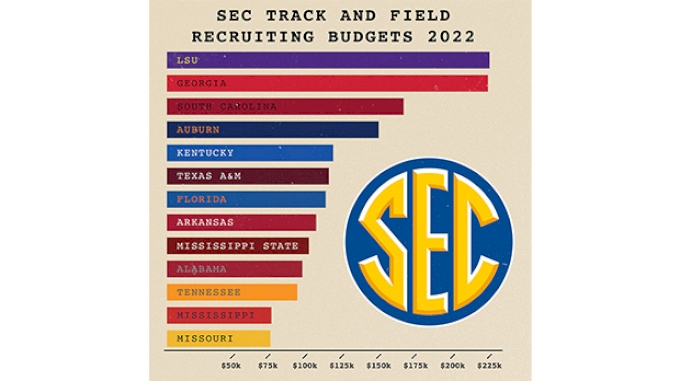
Factors Adding Up
Experiential moments, it turns out, matter. Top end recruits are often given front-row passes to football games to help attract them to the school's atmosphere. If a school's team is nationally ranked? Even better.
But a program's recruiting budget also plays a major difference.
Take Texas, for example. During one recruiting weekend in September of 2022, the Longhorns shelled out over $9,000 and dazzled recruits with a fancy buffet. That might not sound like a lot. But comparatively, Louisville has to budget a set amount of money for the year, which limits the amount its staffers can use over a given week or month.
Another possible advantage is corporate partnerships.
Some hotels partner with universities to get deals; one coach said that may include a compensated room by the hotel chain which isn't counted in the overall recruiting budget. The Olympian Bershawn Jackson, whose daughter Shawnti Jackson signed with Arkansas, also confirmed this. Programs usually also provide personalized touches like packets and pamphlets -- sometimes also personalized amenities like candies -- in hotel rooms, specifically tailored to recruits.
And then a third factor? Coolness.
Texas and Georgia currently have unique Gen Z-style swag for recruits, much of which has made the rounds on social media. Every program allows recruits to try on their uniforms. But the Longhorns offer photography and a personalized boombox they can take their picture with.
Georgia has a custom-black chair that looks like a throne and a room with graffitied walls. That was built in 2022 under Smith Gilbert's reign. Recruits come away looking like Kings and Queens. It seems like most programs are jumping on to the social media train, too.
"The social media component, this just kills me," said one NCAA coach from a Power 5 program. "It just sucks."
Texas said the boombox was provided at-cost for free by donors. Georgia did not release the cost of the chair to MileSplit.
Rasnick said she knows some programs spend more to land recruits.
"There's no financial cap on recruiting," she said. "It's all about whoever has the means can do what they want."
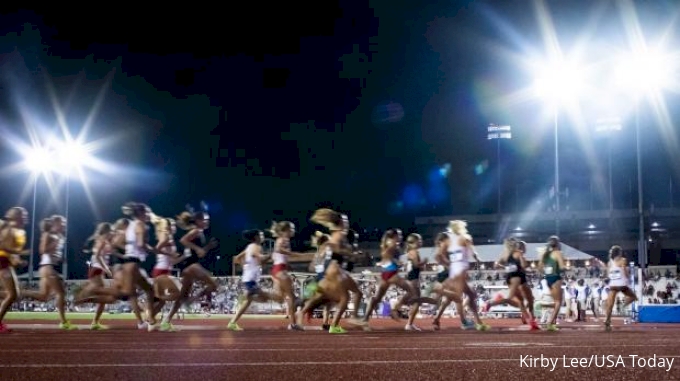
---
AN IMPORTANT WEEKEND
---
MileSplit wanted to see how a program like Texas would spend big for a particular weekend. The second weekend of September, 2022, provided exactly that.
A handful of the country's very best recruits were arriving in Austin that Thursday, September 8, including the likes Sophia Gorriaran, Shawnti Jackson and Micayah Holland.
All were nationally-ranked and all were among the Class of 2023's best recruits. They were the types of athletes that head coach Edrick Floréal, a world-renowned sprint and hurdle expert, coveted.
The Longhorns did not leave anything to chance, picking up each in a series of cars operated by RMA Worldwide, the program's car service.
The top-of-the-line sedans and SUVs arrived at Bergstrom before the athletes and their families were guided to campus, where they spent a day learning the program, meeting with coaches and then with professors. Later, they tried on Texas singlets, toured the glitzy-Texas facilities and then took photos with the custom-made boombox that was donated to the program.
The next morning, the Longhorns treated the recruits to a top-notch breakfast at The Carillon, a high-end restaurant on the Austin campus, followed by a buffet of riches that night at The Otis Autograph, a boutique hotel located just west of the Texas campus.
The program spent $3,568 on the spread, which included manchego roasted asparagus and pommes puree, golden beat and goat cheese salad and truffled spaghetti, ora king salmon, chile glazed organic chicken and flat iron steak.
The program put up the athletes in a Marriott hotel near campus, according to Bershawn Jackson.
The next day, September 10, the athletes attended a nationally-broadcasted Texas-Alabama game where average tickets were selling for $600. Athletes were provided on-field access to one of the biggest games of the season, a matchup that saw Texas lose by just one point, 20-19, in an epic contest featuring some jaw-dropping plays. The benefit was that this add-in was free.
All told, the Longhorns spent $9,451.61 over a single weekend for track and field recruits, not including value-adds. It accounted for roughly 4-percent of the recruiting budget for the year, though the Longhorns managed a big win.
Micayah Holland would later sign with the program.
The Montverde Academy sprinter, who would finish her high school career with times of 11.09w and 23.13 in the 100m and 200m, signed with Texas on Nov. 12, just a week after taking an official visit to LSU and following other stops at Georgia and Southern California.
That was a massive long-term win for the Longhorns for a lot of reasons, but the biggest may have been that Holland fit within Texas' recruiting strategy under Floréal: Locking in elite, versatile sprint and hurdle recruits.
His move may have even proved to be prescient, because not seven months later, Texas won the women's outdoor championship on the back of another recruit that fit that same prototype five years earlier.
"If someone is spending $200 (thousand), someone else is spending $220 (thousand), then the next person spends $240 (thousand). How do you get an edge?" said that former volunteer coach in the Big 12. "Apparently, that's the answer."
In 2018, just months into Floreal's first months on the job at Texas, he signed Alfred, a Commonwealth Youth Games winner out of Saint Lucia who had set national junior records in the 100m and 200m. She arrived in Austin with impressive times of 11.23w (+3.3) and 23.74 in the 100m and 200m, though it took time for her to find her best form.
By 2023, though, in Alfred's graduate year with Texas, she shot out of the canon and into the track record books, claiming five national titles across her indoor and outdoor campaigns and running times of 10.72w (+2.3) and 21.73w (+2.5). Moreover, her teammates -- including Adeleke -- would add 11 more points to the sprint haul indoors and 16 more outdoors. Both Alfred and Adeleke turned pro after the season.
The point being this: One recruit might be all it takes to win an individual title, but a team of top recruits can earn you an NCAA team title, which has larger ramifications for coaches and teams.
If Holland materializes into a scorer for Texas, no less a star, the Longhorns' investment was only a small cost for the value she could ultimately provide in return.
Money, it turns out, can help a program turn the corner.
Teams might take small losses if a recruit doesn't pan out. But if one or two strikes gold, it helps pay for an entire year's recruiting budget.
---
THE FINAL VERDICT
---
There are dueling odds with every blue-chip recruit. Every program wants the readymade star who can qualify and score at the NCAA Championships.
But in track and field, there's a flip side to that equation. If the recruit flies out of the blocks in his or her first year, opportunity lurks in the form of a professional contract. In fact, Smith Gilbert saw that very same example take place after the 2023 outdoor season when Sumner, the prized coup of her signing class in 2022, decided to forgo his final years of eligibility with the Bulldogs in favor of signing with adidas.
That's no rare case. When the recruit is that good, sometimes there's an opportunity-cost that must be done. Sydney McLaughlin-Levrone, Athing Mu, Donovan Brazier and many others have gone through it before.
Sumner's decision will certainly impact the Georgia track roster in 2024. And Smith Gilbert can't easily replace an athlete like him, an NCAA outdoor champion in the 800m who was capable of joining the team's 4x400 for a 45-second split -- though Georgia will certainly try with five-star freshmen like Brody Buffington, Mekhi Gammons and Micah Larry.
The truth is, NCAA team titles are dependent on athletes like Sumner. Their performances might be the difference between a team title or a third- or fourth-place finish.
The Bottom Line
Can superstar recruits yield huge returns for track and field programs?
There's no question they present immense value.
In 2022, the year Florida won the men's and women's NCAA outdoor title -- with the likes of Anna Hall, Talitha Diggs, Parker Valby, Jasmine Moore, Joseph Fahnbulleh, Ryan Willie and Champion Allison leading the way -- the Gators' track and field program made $13,729 on ticket sales for events, earned $60,365 in other contributions and $134,316 from royalties, licensing and advertising sponsorships.
The Gators were -- and are -- a fully-funded track and field program.
On top of that, the Gators scored an additional $82,695 of additional revenue. In total, Florida had a total operating revenue of $296,332 between it's men's and women's teams in 2022, compared to a cost of $117,672 for its recruiting expenses. Florida is likely not alone when it it comes to turning track success into revenue.
A program's ability to create success through recruiting ultimately impacts winning, and winning breeds financial gains.
These successes don't just hand out wins, but they can also create contract extensions, lead to long-term and payout bonuses and even, in the rare case, can make stars out of coaches.
With every official visit providing a glimpse into a program's ethos, the battle for top recruits continues to rage on.
So the important question: Are track and field programs spending too much money?
There is an obvious disparity between the highest spenders (LSU) and the lowest ones (Missouri). The LSU Tigers, one of the NCAA's premier track teams, spent nearly three-times the amount that Missouri did in 2021-2022. Meanwhile, Georgia and Texas are recruiting like power brokers, and Texas A&M is slowly finishing out its three-prong facilities vision.
But Burns still isn't so sure.
"Look at what football teams spend," he said. "They spend millions of dollars in recruiting. Alabama and Georgia, they can afford to do that. I don't think (track and field teams) are out of line. It's part of the deal. You want to recruit the best athletes in the world? You have to be ready to lay out the red carpet when they're there."
---
MileSplit acquired public data through Freedom of Information Act requests to each university. Cory Mull reported this story. For any questions, email him at cory.mull@flosports.tv.
Graphics: Peter Flores
DATES TO KNOW
---
National Letter of Intent
The official date that track and field recruits from the Class of 2024 can sign their National Letter of Intents to attend a university of their choice is November 9, 2023. The period remains open for all recruits in that class to sign until August 1, 2024.
MileSplit's Top 50 Boys Recruits In The Class of 2024
MileSplit's Top 50 Girls Recruits In The Class of 2024
The Top 50 Boys Recruits In The Class of 2025
The Top 50 Girls Recruits In The Class of 2025
Related Content
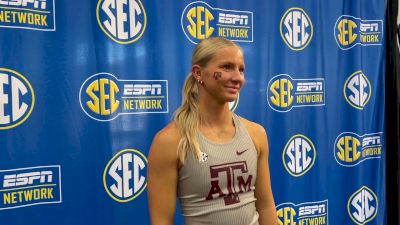 Heather Abadie Is A First-Time PV Champion For TAMU
Heather Abadie Is A First-Time PV Champion For TAMUFeb 24, 2024
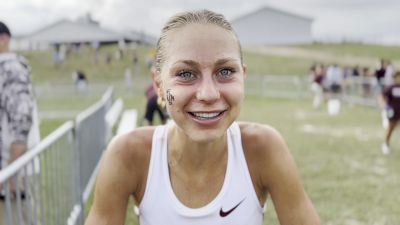 Maddie Livingston Of Texas A&M Builds Confidence At Arturo Barrios Invitational
Maddie Livingston Of Texas A&M Builds Confidence At Arturo Barrios InvitationalOct 14, 2023
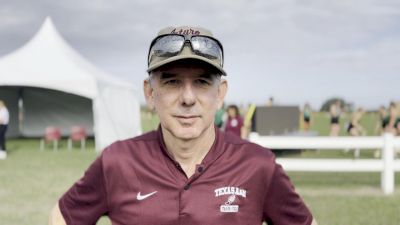 Texas A&M Coach Wendel McRaven On Team's 'Solid" Showing At Arturo Barrios Invitational
Texas A&M Coach Wendel McRaven On Team's 'Solid" Showing At Arturo Barrios InvitationalOct 13, 2023
 Eric Casarez Third At Arturo Barrios Invitational In Final Home Race For Texas A&M
Eric Casarez Third At Arturo Barrios Invitational In Final Home Race For Texas A&MOct 13, 2023
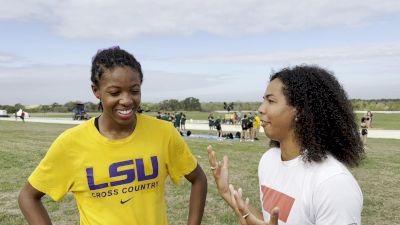 Michaela Rose Of LSU Using Cross-Country To Prep For Huge Track Seasons
Michaela Rose Of LSU Using Cross-Country To Prep For Huge Track SeasonsOct 13, 2023
 Julia Abel Discusses Transition From Texas A&M Athlete To Women's Coach
Julia Abel Discusses Transition From Texas A&M Athlete To Women's CoachOct 13, 2023
 Honoring Lance Harter's Incredible Legacy In NCAA Track & Field
Honoring Lance Harter's Incredible Legacy In NCAA Track & FieldJun 8, 2023
 Quincy Wilson Has Blazing Time; Bullis Third In 4x400 At Penn Relays
Quincy Wilson Has Blazing Time; Bullis Third In 4x400 At Penn RelaysApr 27, 2024
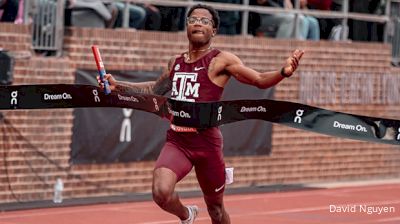 Penn Relays 2024 Results: See Which NCAA Stars Won
Penn Relays 2024 Results: See Which NCAA Stars WonApr 27, 2024